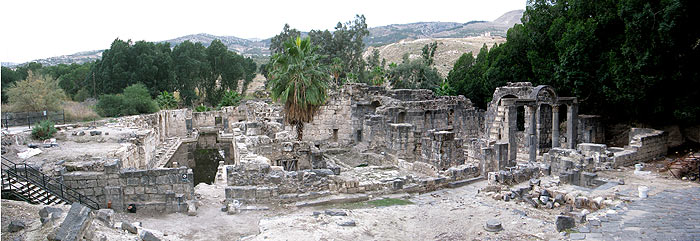Preliminary planning is one of the most important and effective tools in the assorted “toolbox” for protecting and conserving heritage sites. Awareness among archaeologists and decision makers, knowledge of the planning processes and familiarity with the planning institutions are all important conditions for utilizing this tool, and they are currently being assimilated by the Antiquities Authority. An outstanding example of this is the Antiquities Authority’s recent involvement in the detailed planning of the Hamat Gader Valley.
The Hamat Gader Valley is a unique region due to the combination of its natural landscape and the rich human activity that occurred there over long periods and many cultures. This activity has left in its wake one of the most impressive archaeological sites in the country and fascinating historical compounds. This is a small valley with an abundance of water and vegetation, which is traversed by the Yarmuk River channel. It is bounded by steep slopes that distinguish it from its surroundings. In the Hamat Gader Valley there are remains of a city from the Roman and Byzantine periods, of which three main complexes have been excavated since the 1920s: a synagogue and theater (E. Sukenik), a bathhouse, and a section of the cardo (Y. Hirschfeld). The city, which is waiting to be exposed and studied, is located in the area between these complexes. The hot springs have attracted people to the area ever since antiquity, and as of the 1970s they are the focal point of the development activity of a thriving tourism site. The tourism site is managed by a company owned by several kibbutzim in the region. Despite the extensive tourism activity, the archaeological and historical sites stand desolate; they are closed to the visiting public and subject to weathering and destruction.

General view toward the Roman Baths of Hammat Gader, 2010.Photo by: Yael Fuhrmann-Naaman









